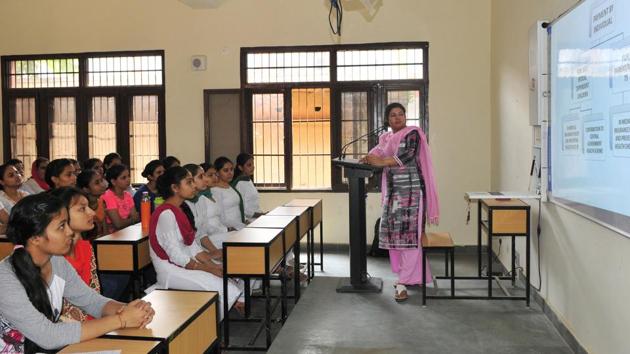Affordable education still out of reach for Indians | Opinion
The NSO recently released a report based on an all-India survey conducted in 2017-18. The survey shows that only 10.6% of the Indian population aged above 15 years has successfully completed a graduate degree. This proportion is only 5.7% in rural India and is 8.3% among women. The proportion of graduates in the same age group was 8.2% as per the 2011 Census.
Before last Sunday’s attack in Jawaharlal Nehru University, the students’ union was protesting a fee hike in the university for months. An analysis of National Statistical Organisation (NSO) data shows that affordable education is a larger problem that needs to be seriously discussed.

The NSO recently released a report based on an all-India survey conducted in 2017-18. The survey shows that only 10.6% of the Indian population aged above 15 years has successfully completed a graduate degree. This proportion is only 5.7% in rural India and is 8.3% among women. The proportion of graduates in the same age group was 8.2% as per the 2011 Census.
Since micro data for the 2017-18 survey on education is not yet available, it is not possible to go into the socio-economic background of those who received higher education. Another NSO survey, the 2017-18 Periodic Labour Force Survey (PLFS),can be used for this, though.
The PLFS data confirms the intuitive belief that social and economic disadvantages perpetuate educational inequalities. The proportion of the population (15 years and above) with a graduate or a higher degree is much lower for the socially backward sections than others. Muslims fare worse than even the Scheduled Caste (SC) Hindus. To be sure, the social gap has been reducing over the years, but it still remains significant. There is also a gender gap when it comes to access to education. (See table 1)

A similar pattern can be seen by economic status as well. Disaggregation by deciles of monthly per capita consumer expenditure shows a strong correlation between economic status (spending) and educational attainment. Data clearly shows the social gap in educational attainment as well as the gap by economic status across and within socio-religious groups. (See table 2)

The NSO report on education also tells us about the average cost of education in the country.
The average annual expense on a graduate course was Rs 10,501 in a government institution, and almost double in an unaided private institution (Rs 19,972). The expenditure for a graduate degree in technical courses in a government college was Rs 36,180 as compared to Rs 72,712 in private unaided institutions.
This must be seen along with the income data available from PLFS (2017-18): 45% of the regular workers, 60% of the self-employed and almost all casual workers earned less than Rs 10,000 a month.
Overall, about 67% of Indian workers earned less than Rs 1,20,000 in a year.
India remains a country with an overwhelming number of poor people who cannot afford expensive education.
The NSS report on education spending also reveals that in the age group of 3 to 35 years, 15% of men and 14% of women never enrolled in an educational institution because of financial constraints; 5% of women never enrolled as there was ‘no tradition in community’.
Among those who were enrolled at some point in time but were not attending at the time of the survey, 24% of men and 18% of women cited financial constraints as the reason for dropping out; 13% of women cited marriage as the reason for dropping out.
What is the importance of a graduate degree in India? If we look at the distribution of graduates in the workforce, 62% were in regular jobs in 2017-18. The wage for a worker with a graduate (or higher) degree in salaried jobs was 1.6 times the overall average wage of a regular worker.
Here, it must be noted that the unemployment rate is much higher among the educated.
Quality education leads to better job prospects and higher wages for all, but also provides a path for social mobility. Students’ demand for better and just prospects for all is completely justified.



